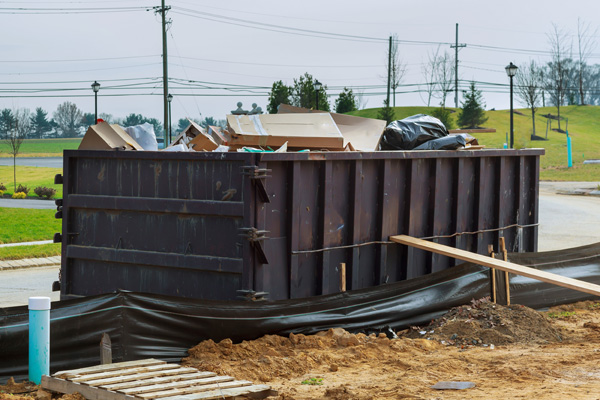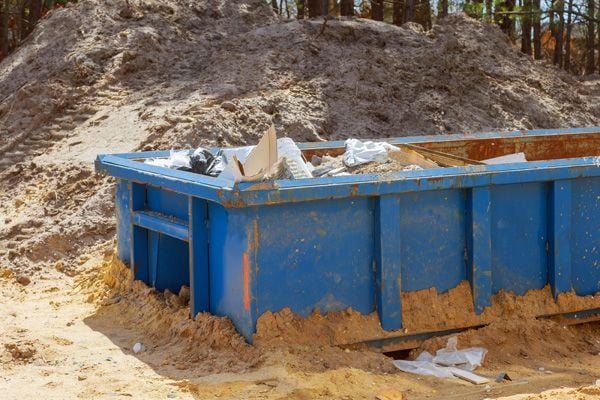Sustainable transportation projects are becoming increasingly popular in urban areas as a way to reduce the impact of traffic and pollution. Renting a dumpster is an important part of many such projects, allowing for the efficient removal of construction debris. This article examines how to rent a dumpster for the successful completion of sustainable transportation projects. The first step when renting a dumpster involves analyzing one’s needs. It is important to consider factors like size and availability before deciding which rental company to use. Additionally, understanding local regulations can help ensure that any project follows necessary laws and guidelines. After taking these considerations into account, it is possible to find the most suitable option for each individual situation. Finally, after selecting an appropriate provider, there are further steps needed before finalizing the rental process. Understanding costs associated with different types of services offered by providers helps ensure that all parties involved get what they need while staying within budget restrictions. Furthermore, asking questions about pick-up times and other logistics ensures that the entire process goes smoothly from start to finish. Waste Management Services It is no surprise that with the advent of sustainable transportation projects, individuals are increasingly turning to dumpster rental services when it comes to disposing of hazardous wastes and tons of trash. Roll off dumpsters come in a variety of sizes, making them suitable for large-scale demolition projects as well as recycling options. The ability to rent these containers has revolutionized waste management services, giving project coordinators an easy way to manage materials without having to worry about long-term storage or disposal. With so many convenient options available, however, there are certain obligations one must consider before renting a roll off container. From understanding local regulations regarding what can be disposed of in the unit, to calculating how much space will be required and other logistical considerations – all of this needs to be taken into account before signing on the dotted line. Furthermore, depending on the type and volume of materials being transported from site to site may require special permits or additional fees. Though such details might seem overwhelming at first glance, taking time to research and understand each step of the process beforehand can save both time and money down the road – something any responsible project coordinator should take seriously. Obligations To Consider Before Rental When planning a sustainable transportation project, renting a dumpster is often necessary. There are two types of roll off dumpster rentals available to meet the specific needs of the project: construction and yard waste. The size of the rental dumpster depends on the amount of debris that will be generated during the course of the project. A cubic yard dumpster is typically sufficient for normal residential use, while a commercial dumpster may be needed for larger projects. Prior to delivery, it is important to consider any obligations associated with using a rental dumpster. Care should be taken to ensure that all local regulations regarding placement and disposal are followed throughout the duration of the project. Additionally, it is important to research which materials can and cannot be placed in the dumpsters; hazardous materials such as oil or paint must not be placed inside them due to environmental concerns. Finally, careful consideration should also be paid when selecting an appropriate company from whom to rent the dumpsters. Reputable companies offer quality service with reliable equipment and speedy delivery service. Speedy Delivery Service When looking to rent a dumpster for a sustainable transportation project, speedy delivery service is an important factor to consider. Most dumpster rental services are able to deliver the necessary size container within 24 hours of placing an order. However, some may charge additional fees for same day or next day delivery. Furthermore, it is important to be aware of any restrictions on how long the dumpster can remain at the job site and whether charges will be incurred if kept longer than the allotted period of time. Additionally, in many areas there are recycling haulers that provide special containers specifically designed for construction debris removal from bike sharing systems and other similar projects. If these types of specialized containers are not available locally, then renting standard roll-off containers from a local dumpster rental company may be the best option. It is also important to note that there may be weight limits associated with certain sizes of containers so it’s important to check with each individual provider about availability of larger capacity containers before making a decision. It is essential to research all available options prior to selecting which dumpster rental company provides the most suitable solution for your particular needs. Once you have determined this information you can begin assessing their rates and terms ensuring you select one that offers competitive prices as well as timely delivery service. Maximum capacity of container should also be taken into consideration when choosing a dumpster rental service. Maximum Capacity Of Container When renting a dumpster for a sustainable transportation project, the maximum capacity of container needs to be taken into consideration. Dumpsters come in various sizes and can usually accommodate construction projects or commercial projects that involve larger amounts of debris. Price typically includes delivery and pick up as well as rental period. The most common size of roll-off dumpsters are 10-, 15-, 20-, 30-, and 40-cubic yard dumpsters; these approximate to 8’x4’x2.5’, 12’x6’x3′, 16’x8’x4′, 22’x8’x5′, and 44′ x 8′ x 5′. These dimensions should provide enough space to store household debris from a sustainable transportation project. The type of material being removed will also affect what size is needed since some materials may weigh more than others, however there is no right answer when it comes to determining the best size. It is important to consider how much waste will need to be disposed throughout the rental period, as going over the weight limit could result in additional fees. Therefore, researching different sizes of containers beforehand will help ensure finding an appropriate one for the job at






